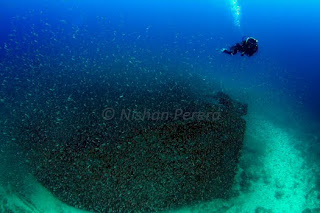Dhigu Thila is a narrow submerged ridge located on the eastern side of Baa Atoll in the Maldives. Dhigu means long in Divehi, the local language, and is an apt name for this reef. Although many of the corals on the shallow reef top are dead, undoubtedly as a result of coral bleaching, there is a profusion of small fish such as anthias and damselfish. The sides of the reef drop away sharply to a sandy floor at a depth of around 35m, where resting white tip reef sharks can sometimes be seen. The steep reef walls have sea fans, black corals and an extensive labyrinth of caves and ledges that provide shelter to larger fish such as moray eels and groupers. At dusk, schools of feeding trevally pass over the reef, picking at smaller fish in dazzling displays of speed.
The Devil Dancer
6 months ago



















































